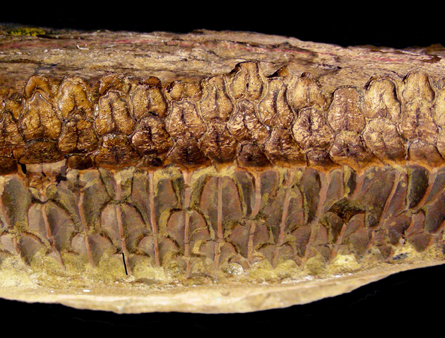Duck-billed dinosaurs were the Cuisinarts of the Late Cretaceous period. They pulverized tough, gritty plants such as conifer trees using hundreds of rough, interlocking teeth that sported an array of filelike crests and basins. Now, scientists have figured out how the herbivores developed such complex chompers: The animals’ teeth contained six distinct types of tissue that wore to differing degrees, creating distinctive peaks and valleys.

The surface of the duck-billed dino’s teeth resembles that of horses, elephants and other modern grazers. These mammals have four main types of tooth tissue. Gregory Erickson, a paleobiologist at Florida State University, and colleagues studied nearly 70-million-year-old Edmontosaurus teeth and found two additional dental tissues, the researchers report in the Oct. 5 Science. Computer simulations demonstrated how the varying hardness of the tissues allowed different dental features to form as a tooth wore down.
Unlike mammals, duck-billed dinosaurs continuously shed and grew teeth. The new research indicates a tooth’s form and function changed over an animal’s lifetime. “You don’t see that in mammals,” Erickson says. “[Duck-billed dinosaurs] arguably have a more sophisticated dentition.”






